Guide Signs
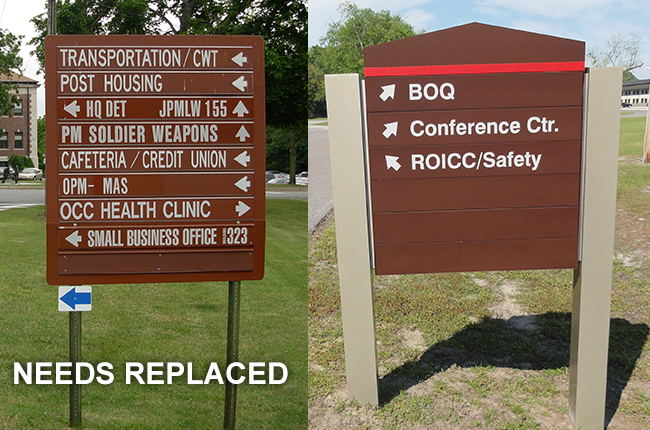
Efforts should be made to replace the traditional "ladder" signs currently present on many installations. Guide signs should be limited to no more than three lines of text.
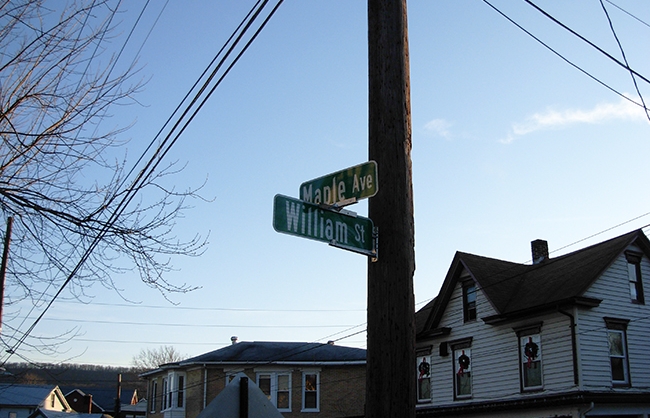
Each destination and street name sign should consist of a white legend on a green background. Green is not mandatory for street name signs, blue, brown and white may also be used for street name sign backgrounds. With green, blue, or brown backgrounds, the legend shall be white. With white backgrounds, the legend shall be black. These signs must also be either retroreflective or illuminated.

Retroreflective street name signs should be installed on diagonally opposite corners of an intersection and mounted with their faces parallel to the streets they name. The lettering on Street Name signs should be composed of initial upper-case letters, followed by lower-case letters. The table above shows recommended minimum letter heights based on the type of mounting, street, and speed limit.
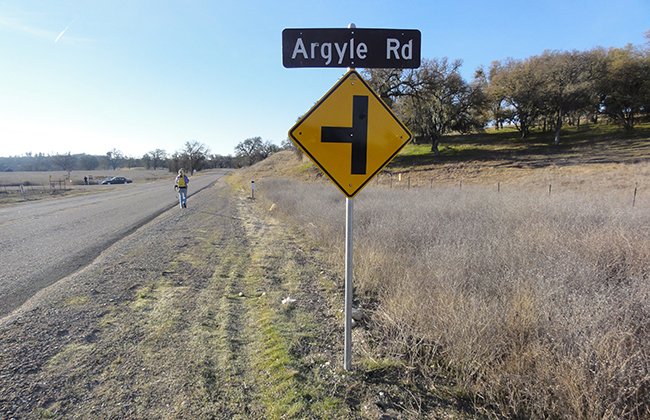
On approaches to intersections, an advance street name sign may be used. The sign should be placed per MUTCD Table 2C-4. On arterial highways in rural areas, Advance Street Name signs should be used in advance of all signalized intersections and in advance of all intersections with exclusive turn lanes. In urban areas, Advance Street Name signs should be used in advance of all signalized intersections on major arterial streets, except where signalized intersections are so closely spaced that advance placement of the signs is impractical.
Destination Signs
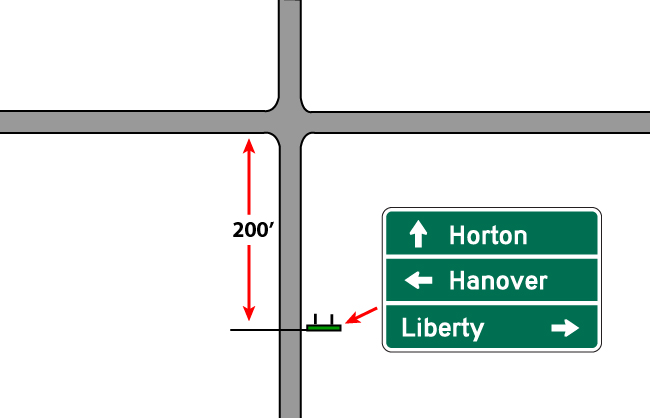
Use destination signs only where significant visitor traffic warrants their installation, and then only as a supplement to street name signs. Limit destination signs to three lines of legend. When used, destination signs should be placed on streets that are reasonably close to the destination, and should be placed a minimum of 200 feet in advance of their intersecting streets.
Community Wayfinding Signs
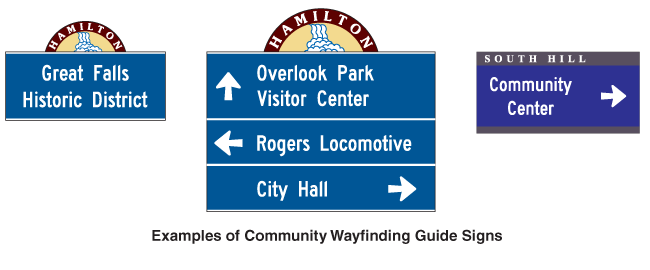
Community wayfinding guide signs are part of a coordinated and continuous system of signs that direct tourists and other road users to key civic, cultural, visitor, and recreational attractions and other destinations within a city or a local urbanized or downtown area.
Community wayfinding guide signs are a type of destination guide sign for conventional roads with a common color and/or identification enhancement marker for destinations within an overall wayfinding guide sign plan for an area.
Community wayfinding guide signs shall not be used to provide direction to primary destinations or highway routes or streets. Destination or other guide signs shall be used for this purpose as described elsewhere in this Chapter and shall have priority over any community wayfinding sign in placement, prominence, and conspicuity.
Because regulatory, warning, and other guide signs have a higher priority, community wayfinding guide signs shall not be installed where adequate spacing cannot be provided between the community wayfinding guide sign and other higher priority signs. Community wayfinding guide signs shall not be installed in a position where they would obscure the road users’ view of other traffic control devices.


